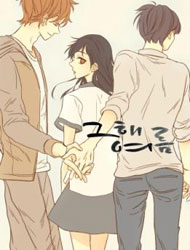In recent years, the world of comics has undergone a transformative shift with the rise of online platforms and digital storytelling techniques. One such innovation that has captivated audiences and creators alike is the concept of scroll and story, a unique format that offers an immersive and interactive reading experience. This emerging trend combines the visual appeal of traditional comics with the dynamic nature of digital platforms, allowing for innovative narrative structures and engaging storytelling. Unlike traditional print comics, which are confined to panel-by-panel progression, scroll and story embraces the infinite canvas of the digital medium. By presenting a continuous vertical stream of panels, creators can craft narratives that unfold seamlessly, providing readers with a fluid and immersive journey through the story. Creators have the freedom to play with panel sizes, transition effects, and visual cues to create a more dynamic and visually appealing reading experience.
At its core, scroll and story refers to the vertical scrolling format commonly used in online comics. The scrolling motion itself becomes an integral part of the storytelling, allowing for a sense of progression and movement that aligns with the unfolding plot. Moreover, scroll and story opens up new possibilities for interactive storytelling elements. Through scroll-triggered animations, parallax effects, or interactive panels, readers can actively participate in the narrative. This interactivity adds an extra layer of engagement, as readers become co-creators, navigating through the story at their own pace and uncovering hidden details or branching paths. The format becomes a perfect marriage of storytelling and user experience design, blending the strengths of both to captivate and involve the audience. The scroll and story format has also proven to be a powerful tool for experimenting with non-linear narratives. Traditional comics often follow a linear structure, with panels arranged in a fixed order.

However, in scroll and story, creators can play with temporal and spatial relationships, offering multiple entry points and non-linear storylines. Readers can choose their own path through the narrative, exploring different character perspectives or uncovering alternate story arcs. This freedom to navigate the story landscape adds depth and replay ability to the experience, encouraging readers to revisit the comic multiple times to discover new narrative threads. As online platforms continue to evolve and adapt to user preferences, scroll and story is gaining prominence as a preferred format for web comics and click here now https://newtoki.pro. It not only caters to the growing popularity of mobile reading but also aligns with the habits and expectations of modern digital audiences. By capitalizing on these existing user behaviors, scroll and story comics can reach wider audiences and attract new readers who may not have been exposed to traditional print comics. By leveraging the strengths of the digital medium, this format engages readers through immersive experiences, interactive elements, and non-linear narratives. As the online comic landscape continues to evolve, scroll and story holds immense potential to shape the future of visual storytelling, opening up exciting possibilities for both creators and readers alike.
